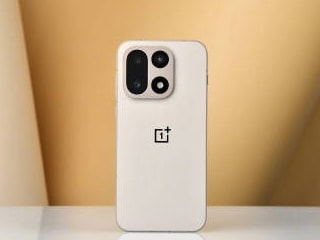- Home
- Laptops
- Laptops News
- AMD Radeon RX 6900 XT, 6800, 6800 XT Price and Release Date Announced
AMD Radeon RX 6900 XT, 6800, 6800 XT Price and Release Date Announced
Arriving in November and December, to take on Nvidia’s RTX 3000 series.

Photo Credit: AMD
AMD CEO Lisa Su at the Radeon RX 6000 series launch on Wednesday
AMD has unveiled three new graphics cards under the Radeon RX 6000 series: AMD Radeon RX 6800, AMD Radeon RX 6800 XT, and its new flagship AMD Radeon RX 6900 XT. The last of them is the fastest gaming graphics card AMD has ever developed, the American giant claimed in its announcement. The first two — RX 6800 and RX 6800 XT — will be available November 18 at $579 (about Rs. 43,000) and $649 (about Rs. 48,000) respectively, with the RX 6900 XT following December 8 for $999 (about Rs. 74,000). India prices have not been revealed and are expected closer to launch date, which should be in line with the global launch.
The three new AMD Radeon RX 6000 series graphics cards go up against Nvidia's GeForce RTX 3000 series, which were announced in early September and rolled out later that month globally, including India. The GeForce RTX 3000 series starts at $499/ Rs. 51,000 (for the RTX 3070) and goes up to $1,499/ Rs. 1,52,000 (for the RTX 3090, Nvidia's new flagship). If AMD too sticks to the $1 = Rs. 100 price conversion strategy like Nvidia (and many others by now) — this is thanks to local taxes and import duties — expect the AMD Radeon RX 6000 series to cost between Rs. 58,000 – Rs. 1,00,000.
Though AMD's new graphics cards have a higher starting price point ($579 for RX 6800 vs $499 for RTX 3070), it's undercutting Nvidia elsewhere: $649 for RX 6800 XT vs $699 for RTX 3080, and $999 for RX 6900 XT vs $1,499 for GeForce RTX 3090. The last of them is especially going to make heads turn, with a 33 percent difference between the price of their respective flagships. Of course, it's impossible to say at this point if performance will be comparable. AMD has a lot of new bells and whistles it's touting for the Radeon RX 6000 series.
First up, there's the new AMD RDNA 2 gaming architecture — it's also being used in both next-gen consoles, PlayStation 5 and Xbox Series S/X, though only the latter will have “full hardware support” for all its capabilities — which promises to deliver two times the performance in select games, even though it's still using the 7-nanometre transistor size. That's a bit of a cherry-picked number, as it compares the RX 6900 XT to RX 5700 XT (which uses AMD RDNA).
What does RNDNA 2 offer? Improved energy efficiency, reduced latency (thanks to AMD Infinity Cache), and 30 percent frequency boost at the same power level. There's also support for DirectX 12 Ultimate API that was previously limited to Nvidia GPUs. It allows for ray-tracing (real-time lighting, shadows and reflections) and variable rate shading. AMD says that developers can aim for both quality and performance when this is combined with its own AMD FidelityFX, a collection of lighting, shadow and reflection effects that help with hybrid rendering.
Additionally, the AMD Radeon RX 6000 series also supports AMD Smart Access Memory (this only works if you also have an AMD Ryzen 5000 series CPU and AMD B550/ X570 motherboard), Microsoft DirectStorage (for faster loading times and high-quality textures), Radeon Software Performance Tuning presets (one-click settings including “Rage Mode” stable overclocking), and Radeon Anti-Lag (quicker response times).
The one drawback is an AMD equivalent of Nvidia's DLSS: deep learning super sampling. With DLSS, Nvidia GPUs render fewer pixels and then use “AI” to upsample them to higher resolutions. This decreases the load on RTX 3000 series while still allowing for close to native resolution quality. AMD has a tech of its own called Super Resolution, but it hasn't provided any details as it's still in the works and won't be available for several months after the launch of Radeon RX 6000 series. This also means AMD's ray-tracing won't be on the same level as Nvidia's for now.
In a prepared statement, AMD graphics' corporate VP and GM Scott Herkelman said: “Today's announcement is the culmination of years of R&D focused on bringing the best of AMD Radeon graphics to the enthusiast and ultra-enthusiast gaming markets, and represents a major evolution in PC gaming. The new AMD Radeon RX 6800, RX 6800 XT and RX 6900 XT graphics cards deliver world class 4K and 1440p performance in major AAA titles, new levels of immersion with breathtaking life-like visuals, and must-have features that provide the ultimate gaming experiences.”
The AMD Radeon RX 6000 series will begin roll-out in November, with cards offered by AMD, in addition to its partners in ASRock, ASUS, Gigabyte, MSI, PowerColor, Sapphire, and XFX.
Get your daily dose of tech news, reviews, and insights, in under 80 characters on Gadgets 360 Turbo. Connect with fellow tech lovers on our Forum. Follow us on X, Facebook, WhatsApp, Threads and Google News for instant updates. Catch all the action on our YouTube channel.
Related Stories
- Samsung Galaxy Unpacked 2025
- ChatGPT
- Redmi Note 14 Pro+
- iPhone 16
- Apple Vision Pro
- Oneplus 12
- OnePlus Nord CE 3 Lite 5G
- iPhone 13
- Xiaomi 14 Pro
- Oppo Find N3
- Tecno Spark Go (2023)
- Realme V30
- Best Phones Under 25000
- Samsung Galaxy S24 Series
- Cryptocurrency
- iQoo 12
- Samsung Galaxy S24 Ultra
- Giottus
- Samsung Galaxy Z Flip 5
- Apple 'Scary Fast'
- Housefull 5
- GoPro Hero 12 Black Review
- Invincible Season 2
- JioGlass
- HD Ready TV
- Laptop Under 50000
- Smartwatch Under 10000
- Latest Mobile Phones
- Compare Phones
- OnePlus 15R
- Realme Narzo 90x 5G
- Realme Narzo 90 5G
- Vivo S50 Pro Mini
- Vivo S50
- OPPO Reno 15c
- Redmi Note 15 5G
- Redmi Note 15 Pro 5G
- Asus ProArt P16
- MacBook Pro 14-inch (M5, 2025)
- Infinix Xpad Edge
- OnePlus Pad Go 2
- OnePlus Watch Lite
- Just Corseca Skywatch Pro
- Acerpure Nitro Z Series 100-inch QLED TV
- Samsung 43 Inch LED Ultra HD (4K) Smart TV (UA43UE81AFULXL)
- Asus ROG Ally
- Nintendo Switch Lite
- Haier 1.6 Ton 5 Star Inverter Split AC (HSU19G-MZAID5BN-INV)
- Haier 1.6 Ton 5 Star Inverter Split AC (HSU19G-MZAIM5BN-INV)

















